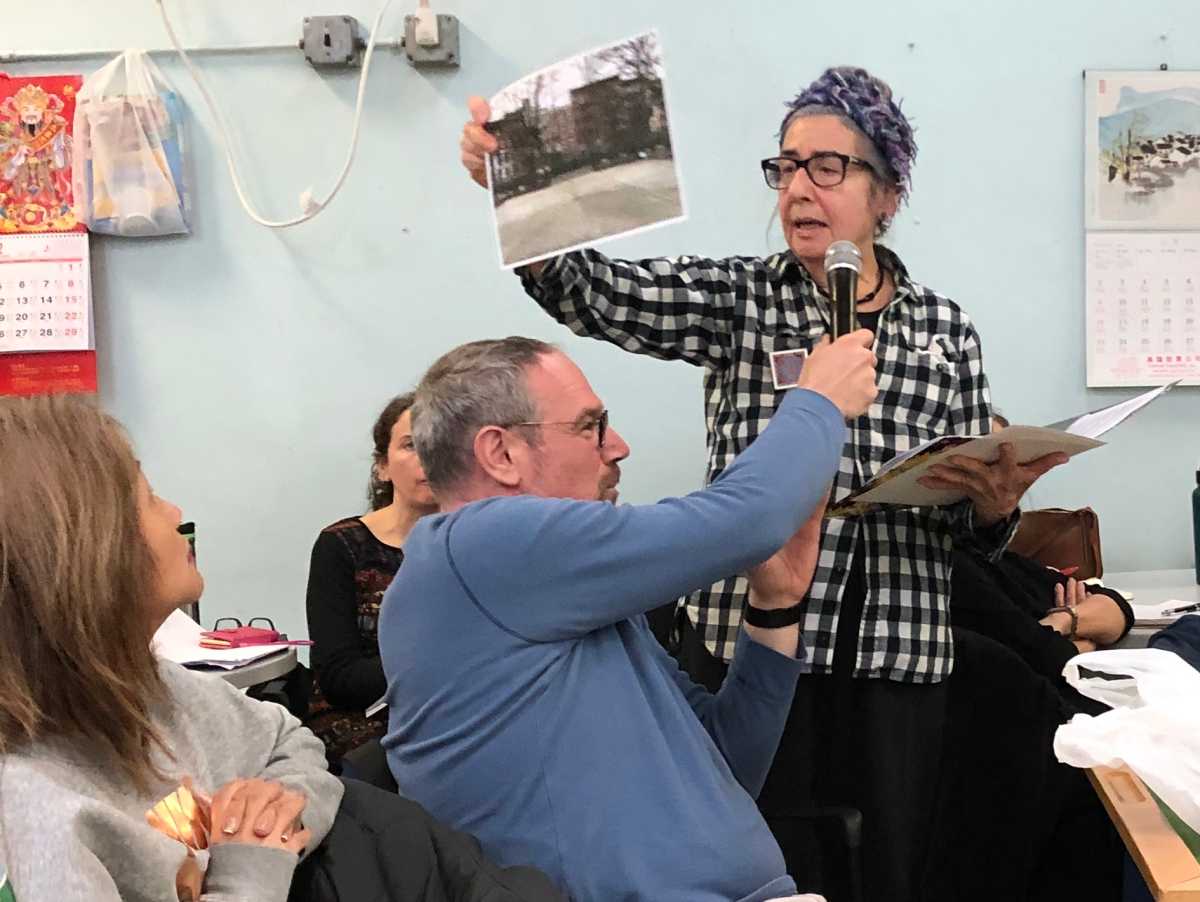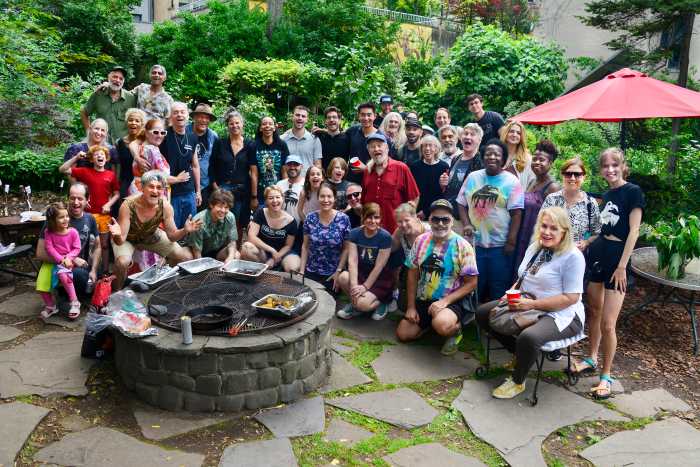By Joaquin Cotler
Representatives from the Parks Department, the Economic Development Corporation (EDC), and the design firm AECOM addressed Manhattan’s Community Board 3 last week, and following a lawsuit filed by several local organizations calling for the annulment of the City Council’s November approval of the East Side Coastal Resiliency (ESCR) Project, the DDC provided an update on the project.
While the presenters could not comment on that status of the lawsuit, they attempted to reassure the room—populated by residents of Manhattan’s Lower East Side, Two Bridges, and East Village neighborhoods—that their concerns surrounding the impact of the ESCR were being taken into account during the planning process.
The ESCR, a $1.45 billion project developed in the wake of Hurricane Sandy, is jointly funded by the City of New York and the federal government. The proposed project extends from 25th St. to Montgomery Street on Manhattan’s East Side, where it will connect with another initiative, the Brooklyn Bridge-Montgomery Coastal Resilience Project (BMCR).
The goal of the BMCR project is to reduce flood risk due coastal storms and sea level rise, which currently threaten the homes of over 110,000 New Yorkers, by building “one continuous line of flood protection down the entire East River Esplanade,” consisting of retaining walls, flip-up floodgates, and land-fill to raise the elevation.
“The entire waterfront of CB3 is under some sort of construction,” said Community Board 3 Chair Trever Holland.“But the good news is that we will all be getting some sort of flood protection. It is a painful process though.”
While the importance of flood mitigation is not lost on locals, the direct impact on the affected neighborhoods is a major concern for many CB3 residents.
Lower Manhattan is one of the most densely populated areas in the country, and the park and public use spaces are of utmost importance to its residents. Under the proposed construction plan, much of the current parkland would be rendered either temporarily unusable or converted to flood mitigation infrastructure. And despite the renovation of the Pier 42 Deck as an interim solution, baseball fields, basketball courts, public art installations and over 1000 trees would all need to be moved or completely removed.
One bright spot for residents was the announcement that the compost yard will not be immediately affected.
“We’re happy about the announcement about the compost yard,” said one resident. “The ecology center would like to stay in the East River Park until 2023 and we absolutely need to have consistent policies about composting. It belongs in parks; a healthy resilient park is a park with soil and composting is a big part of that.”
But the loss of hundreds of trees—an issue that has persisted since Superstorm Sandy and will only be exacerbated by the proposed construction—is a major concern for locals. While the city has pledged to plant 1000 trees in the area, committee member Michael Marino raised the concern that they wouldn’t wind up near the waterfront, and instead would be planted in neighboring Community Board 6.
“These seem to be very west of East River Park, where we will be losing most of our trees,” Marino said.
Navé Strauss, the director of street tree planting for the Parks Department, tried to reassure him. “We will plant as many trees as we can as close to the locus in East River Park back into this community,” said Strauss. “We’ll try to fit as many as we can into CB3 site-specific determinations will help us get to that goal.”
While some residents felt the city had listened to their concerns, others felt they would be disproportionately affected by the construction.
“Where we live, you’re taking away our basketball half-court and what we’re getting nothing close to what other areas are getting,” said one resident. “How is this justifiable when you’re talking about equitable distribution of amenities?”
Lauren Swan from AECOM, the firm working with EDC on BMCR, assured the board that every decision was made based on environmental constraints while keeping residents’ needs in mind.
“It is a design goal of this project to distribute programs and amenities as equitably as we can,” she noted. “We have been exploring every possible option to try to achieve that objective. If we could keep basketball in this location we would do it. Unfortunately, flood protection alignment can only fit right down the middle of the esplanade.”
As a result, she said, basketball courts, playgrounds, and walkways that would be affected by the construction would have to be relocated to wider parts of the esplanade. “We are constrained by space, there isn’t enough space to implement even half-court basketball.”
Swan also noted that while there would not be public restrooms added along the waterfront, the sewer infrastructure and the water main lining the entire BMCR—which burst last week causing severe flooding—would be replaced as part of the project.
Residents await further information from the Parks Department, the Department of Sanitation, and the Department of Transportation in the coming months.































